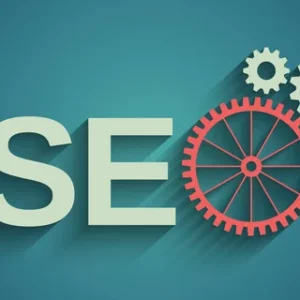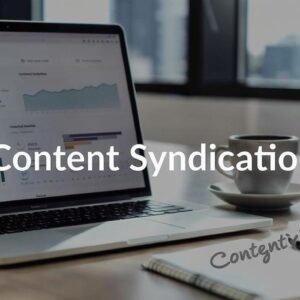In the fast-paced world of modern sales, BANT remains a foundational framework, yet it isn’t what BANT was a decade ago. Originally created to help sales teams quickly qualify prospects based on Budget, Authority, Need, and Timeline, BANT has evolved alongside buyer behavior, technological advancement, and complex purchasing journeys. Relying on traditional BANT without understanding its modern limitations can lead to missed opportunities, delayed sales cycles, and misaligned marketing efforts. Today, sales leaders must rethink BANT to align with contemporary customer expectations and decision-making processes.
Understanding the Original BANT Framework
Historically, BANT offered a structured approach for sales teams to identify qualified leads efficiently. The framework focuses on four key criteria:
-
Budget: Does the prospect have the financial resources to purchase your product or service?
-
Authority: Is the contact person authorized to make purchasing decisions?
-
Need: Does the prospect have a specific pain point your solution can solve?
-
Timeline: When is the prospect planning to make a decision or implement a solution?
While this method streamlined qualification processes, the landscape of buyer behavior has shifted dramatically. In the past, buyers relied heavily on sales reps to guide their purchasing decisions. Now, buyers conduct extensive research online, compare solutions independently, and involve multiple stakeholders in the decision-making process. This evolution makes traditional BANT less effective if used as a rigid checklist.
Why BANT Isn’t What It Used to Be
The modern sales environment introduces complexities that the traditional BANT framework cannot address adequately. Here are key reasons why BANT has changed:
-
Multi-Stakeholder Decision Making: Buyers today rarely act alone. Decisions often involve committees, cross-departmental input, and external consultants. Limiting qualification to a single point of authority underestimates the influence of other stakeholders.
-
Extended Buyer Journeys: The timeline for purchasing decisions has lengthened. Buyers take time to evaluate solutions, seek peer recommendations, and validate ROI. Relying solely on initial timeline estimates may misrepresent true readiness to purchase.
-
Digital-First Research: Prospects are more informed than ever. They analyze product reviews, competitor offerings, and online resources before speaking with sales representatives. Sales teams must now align BANT with digital insights to capture meaningful engagement.
-
Focus on Value, Not Price: Traditional BANT often prioritizes budget constraints, but modern buyers prioritize value, outcomes, and ROI over cost. Qualification criteria must evolve to evaluate whether your solution delivers measurable results, not just fits within a budget.
Adapting BANT for Modern Sales Success
To maximize its effectiveness, BANT should be adapted for today’s complex buying environment. The following strategies help modernize the framework:
-
Expand Authority Assessment: Instead of identifying a single decision-maker, map the entire buying committee. Use insights from LinkedIn, CRM data, and social listening tools to understand all stakeholders and their influence.
-
Refine Needs Analysis: Move beyond surface-level pain points. Dive deep into business outcomes, strategic goals, and long-term objectives. Understanding the broader organizational impact of your solution strengthens your qualification process.
-
Emphasize Value Over Budget: Rather than focusing solely on whether a prospect has the budget, evaluate their willingness to invest in value-driven solutions. Highlight ROI and tangible benefits to encourage informed decision-making.
-
Integrate Buyer Intent Signals: Modern sales intelligence platforms provide real-time intent data. Incorporating these signals into BANT helps identify prospects actively researching solutions, allowing teams to prioritize high-potential leads.
-
Adapt Timeline Flexibility: Recognize that timelines may shift due to internal processes or market changes. Adopt a dynamic approach to timeline qualification that accommodates evolving buyer needs.
BANT in the Context of Account-Based Marketing
The integration of BANT with account-based marketing (ABM) strategies creates a more robust qualification process. ABM focuses on targeting high-value accounts with personalized campaigns, while BANT ensures that contacts within those accounts meet the right criteria for conversion. By combining BANT with ABM, sales and marketing teams can identify opportunities more efficiently, tailor messaging to buyer needs, and accelerate pipeline velocity.
Leveraging Technology to Modernize BANT
Sales technology is crucial for modernizing BANT. CRM systems, AI-driven analytics, and marketing automation platforms enhance the traditional framework by providing data-driven insights. For example, predictive analytics can reveal budget allocation patterns, identify emerging stakeholders, and detect intent signals—all critical elements for modern BANT qualification.
Additionally, AI-powered tools allow sales teams to segment leads, score prospects dynamically, and prioritize efforts based on likelihood to convert. This ensures that BANT evolves from a static checklist to a living framework informed by data and aligned with buyer behavior.
Case Studies: Modern BANT in Action
Several leading companies have successfully adapted BANT for today’s buyer landscape. For instance, SaaS firms have shifted from focusing solely on budget and authority to understanding enterprise-level needs, cross-functional stakeholders, and long-term value. This approach has resulted in higher engagement rates, shorter sales cycles, and improved close ratios.
Similarly, B2B technology providers integrate BANT with intent data platforms, enabling sales teams to prioritize leads that show active interest in solution features. By tracking engagement patterns and buying signals, these organizations align their outreach with the actual readiness of prospects to purchase.
Common Pitfalls of Rigid BANT Application
While BANT remains valuable, rigid application can limit its effectiveness. Some common pitfalls include:
-
Ignoring Buyer Research Habits: Assuming buyers need education before purchase may lead to irrelevant outreach. Recognize that modern buyers often arrive well-informed.
-
Overemphasis on Budget: Focusing only on financial constraints risks overlooking accounts willing to invest in high-value solutions.
-
Single Stakeholder Focus: Targeting only one authority figure can result in stalled deals if other influencers are neglected.
-
Static Timelines: Treating timelines as fixed can create pressure on buyers and misalign sales strategies with real buying cycles.
Future-Proofing Your Sales Qualification
Sales organizations must continuously evolve BANT to remain competitive. Combining traditional principles with insights from buyer behavior, technology, and market intelligence ensures that BANT stays relevant. Teams should regularly audit their qualification criteria, incorporate predictive analytics, and refine engagement strategies based on real-world data.
Modern BANT isn’t about abandoning the framework but reimagining it. By embracing flexibility, emphasizing value, and aligning with contemporary buyer expectations, sales teams can leverage BANT to drive growth, efficiency, and stronger relationships with prospects.
About Us: Acceligize is a global B2B demand generation and technology marketing company helping brands connect with qualified audiences through data-driven strategies. Founded in 2016, it delivers end-to-end lead generation, content syndication, and account-based marketing solutions powered by technology, creativity, and compliance.






